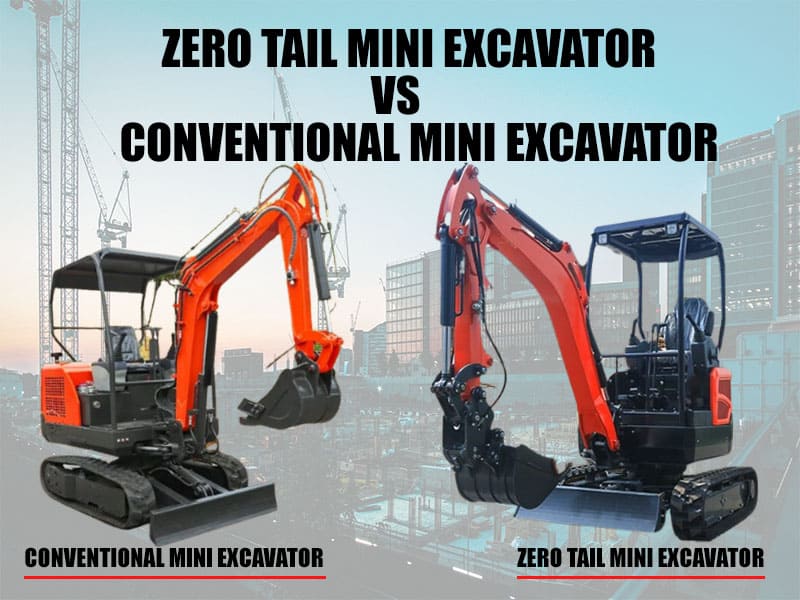Zero tail swing mini excavator VS conventional mini excavator, which one is the best to choose? Conventional mini excavators are one of America’s most popular compact machines due to their ability to work in confined spaces, from fenced-in backyards to congested roadways. They were unfamiliar from the start.
Last decades ago, those first units were America’s giant hydraulic excavators, made for heavy construction with an offset operator’s station and a rear engine that also served as a counterweight to boost lifting capacities. Today you have to choose between a zero tail swing mini excavator VS a conventional mini excavator. They offer you great flexibility, no matter which type of contractor makes on the worker lot.
You can also apply differences in counterweights to each of these two styles. After making the excavator, the machine makers started to rethink compact or mini excavator designs, looking to repackage the machines to make them able to work in even tighter spaces or immediately adjacent to heavy traffic. So after that, the result was the zero tail swing mini excavator.
Zero Tail Swing Mini Excavator VS Conventional Mini Excavator
Before comparing the Zero tail swing mini excavator VS the conventional mini excavator, we quickly review both machines.
Conventional Mini Excavators
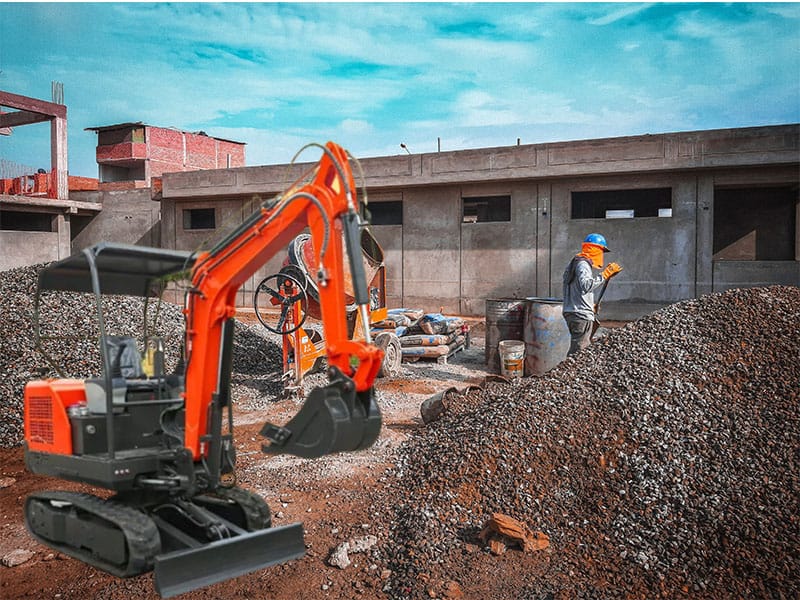
A conventional mini excavator is a tracked or wheeled vehicle with an operating weight of 0.7 to 8.5 tonnes. It has a standard backfill blade and features an independent boom swing. Conventional compact excavators are also made to push your performance and productivity to new levels. The mini excavator includes enhanced features for more precise control to work more efficiently and comfort features to make tough jobs easier.
At the same time, hydraulic excavators are different from other construction equipment because all movement and functions of the machine are accomplished through the transfer of hydraulic fluid. The compact excavator and blade workgroup are activated by hydraulic fluid acting upon hydraulic cylinders. The compact excavator and blade workgroup are started by hydraulic fluid acting upon hydraulic cylinders.
The excavator’s rotation and travel functions are also activated by hydraulic fluid powering hydraulic motors. Conveniently attach a wide range of specialized attachments to each conventional mini excavator and push your performance to new heights. These compact excavators maximize productivity and uptime in rigid and confined working conditions.
Conventional Mini Excavator Applications
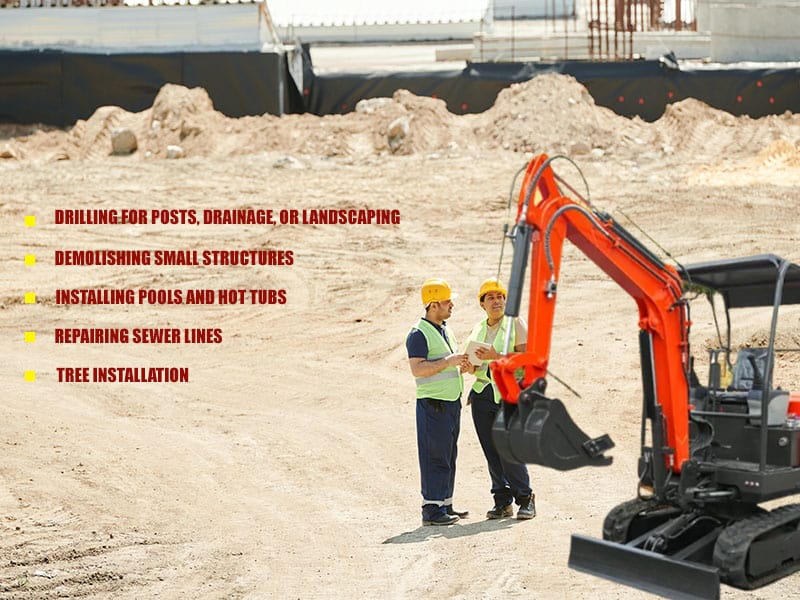
Installing pools and hot tubs: Conventional Mini excavators are perfect for digging out in-ground pools or hot tubs, even in the smallest backyards and tight places. The machine’s mobility, power, and accuracy handling make it a go-to for residential earthworks.
Repairing sewer lines: Conventional small excavators allow operators efficiently to move dirt when repairing sewer lines and fit in tight spots near structures. When the repair is completed, they level the yard using an attachment such as a dozer blade.
Tree installation: You can observe that your mini excavator can quickly dig holes for tree transplants and then backfill over the root ball. With the right attachments, you can remove even more giant trees. A thumb grapple attachment is best for digging up stumps.
Demolishing small structures: Using a Conventional mini excavator, you can take down all Barns and sheds. You can also use it to load debris onto the back of a trailer for disposal.
Drilling for posts, drainage, or landscaping: Conventional mini excavators can quickly drill deep into soil or concrete for installing fence posts, road signage, or trees using an auger attachment.
Zero Tail Swing Mini Excavator
What does zero tail swing mini excavator mean? Zero tail swing mini excavator means the body or cab of a zero swing mini excavator will never go over the machine’s tracks as you rotate it. It makes the excavator easier to move and reduces the probability of hitting buildings and other obstructions. In 1993 Yanmar launched the world’s first Zero Tail Swing excavator, which allows the counterweight to stay inside the width. So it helps you can operate in tight, enclosed spaces without fear of damaging buildings.
Benefits of a Zero Swing Mini Excavator
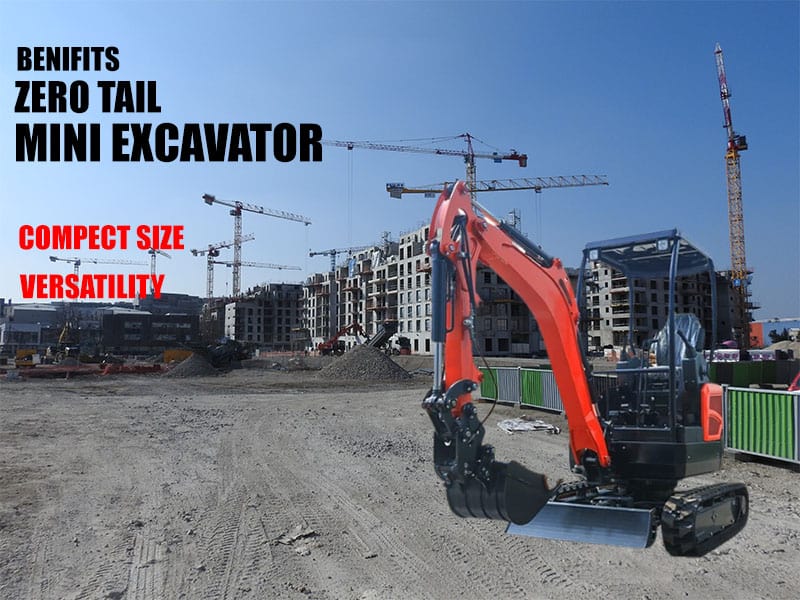
Compact Size
The most significant and obvious advantage is their ability to fit into small, not having enough space where traditional excavators are not working, for example, a gap between a house and a fence. Sometimes the area is too small for a giant excavator, but the project is too large, and you do not do the work by hand. So at that time, the zero swing mini excavator shines. Zero swings are generally classified as mini or small excavators.
Versatility
It is also a great benefit of their versatility. While not strictly limited to just zero-tail swing mini excavators, these smaller machines can also use the same types of attachments as larger excavators. They are used on many work sites; whether a rock breaker or a concrete crusher, zero-swing mini excavators are versatile and can work in tight or open areas without any problems.
Differences Between Zero Tail Swing Mini Excavator VS Conventional Mini Excavator
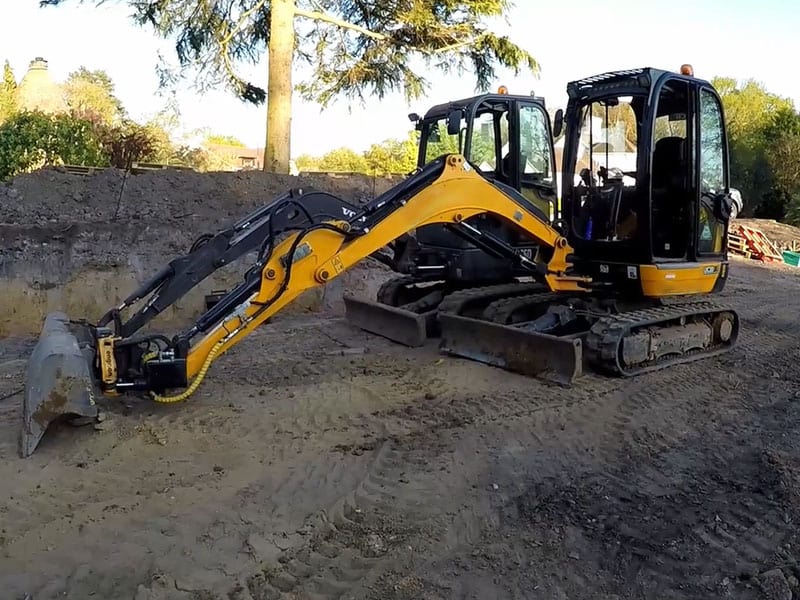
- We find many advantages to a zero tail swing mini excavator over a mini excavator, including added lifting capacity and bucket and arm breakout force.
- If you think about it logically, the counterweight hangs out more, so you have more leverage with a conventional mini excavator than with a zero tail swing machine.
- Another advantage of the cost as most zero tail swing mini excavators are less expensive. Also, zero tail swing small machine designs provide increased safety with less risk of striking persons or objects.
- If you work in comprehensive work sites where the mini excavator is dedicated to loading trucks and moving dirt, you can still certainly use a reduced tail swing mini excavator. At the same time, a conventional mini excavator will offer you the most incredible flexibility in strength and operation.
- The difference in capabilities between layouts is minimal. There are no significant operational differences between a mini machine and a compact radius machine.
- Traditional mini machines offer excellent digging and lifting capability when we talk about Zero tail swing mini excavators VS conventional mini excavators. With undercarriage, front linkage, and work tool options. So it is right to say they are the best all-around choice for most general construction applications.
- In terms of ease of maintenance, zero tail swing small excavators are harder to work on in the conventional configuration. Because they have less room for mechanics and service people to access the components on a reduced tail swing mini excavator, in contrast to the traditional mini excavator. The doors are small, the cab is small, and the access areas are small because you are trying to squeeze everything into a small space.
- You think conventional mini excavators are more versatile than zero-tail-swing models; however, zero-tail-swing excavators can be versatile when paired with the right attachments. These attachments include standard buckets, quick couplers, hydraulic clamps, and hydraulic breakers, which give a low initial investment with a high rate of return.
- Caterpillar zero tail swing excavators offer similar ease of access in most service points located at ground level to provide technicians with quick access to major components and regular service items.
- Although conventional mini excavators typically offer the most significant productivity and output compared to reduced or zero tail swing excavators.
- Zero-tail swing mini excavators allow operators to focus on digging and not looking at where they are swinging and are intended for operation in limited spaces, like next to a wall.
- Zero-tail-swing excavators are often operated in excavating, grading, and site development where space is not a concern. These devices are also standard on construction sites where the material is loaded into trucks for infrastructure projects.
Zero Tail Swing Mini Excavator VS Conventional Mini Excavator, Which One is the Best to Choose?
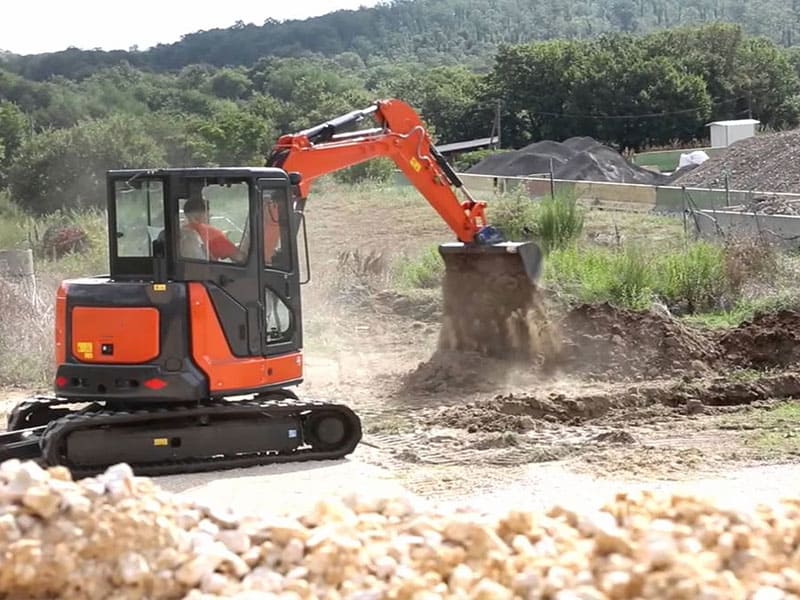
Contractors must evaluate the job site carefully and determine whether lifting power is more important. So it all depends on the project; you may require a zero tail swing excavator, a conventional mini excavator on-site, or whatever you choose. You can take advice from some experienced staff to determine which configuration is best for your upcoming project.
When spacing out work, contractors must ensure that the excavator they choose can do the tasks. So, correctly matching your machine to its position is essential to maximize productivity. However, it is not always possible to put a conventional mini excavator on every job site. For these jobs, mini excavators designed with a zero-tail-swing configuration are becoming popular.
These zero tail-swing excavators are used primarily in congested urban areas, such as road and bridge construction projects where traditional excavators cannot fit as easily. For example, the zero-tail-swing radius can allow excavator operators to work in one lane of a street or highway without blocking traffic.
Zero tail swing mini excavators are ideal when digging and backfilling trenches in a confined area. A conventional mini machine will serve your needs if you have a sand and gravel operation and the excavator never leaves the pit. If you are a contractor who works on different sites, your customers’ needs and the flexibility to react to the site’s demands will allow you to win bids and serve better. Safety is another factor you should consider; if the counterweight can cause damage to structures or hurt people, you want to consider a zero tail swing machine.
The Verdict
We summarize the zero tail swing mini excavator VS conventional mini excavator; now decide whether a zero swing excavator is suitable for your work. Both excavators are incredibly versatile and can often perform best as traditional excavators in some situations. These are the best choices to work in a tight, narrow area. Contact us to buy a mini excavator or zero tail swing excavator.

